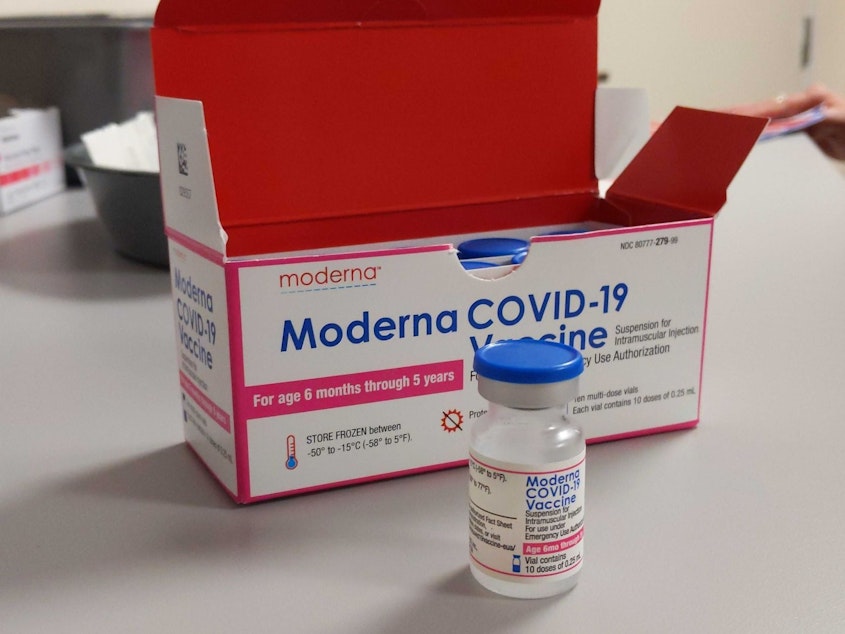Few of Washington's youngest kids are getting the Covid vaccine

About a month and a half after Covid-19 vaccines became available to kids under 5 in Washington state, just under 9 percent have had their first shot.
That’s significantly lower than all other age groups.
These youngest kids, 6 months to 4 years old, were the last group to become eligible for Covid vaccines.
Initially, there was a rush for appointments from parents who had been waiting for months to immunize their babies, toddlers, and preschoolers.
Like rollouts for other age groups, demand outstripped supply in the first few days.
But since then, things have slowed considerably. And it’s not a supply issue, according to state health officials.
A lot of factors are likely playing a role in the low uptake. Access barriers could be preventing some families from taking their children to get their shots. Hesitancy is also a key factor.
Sponsored
“We’re hearing from a lot of parents that they’re taking a ‘wait and see’ approach, and that concerns us,” said Michele Roberts, assistant secretary for prevention and community health at the Washington state Department of Health.
Roberts said parents may feel waiting is a less risky choice, but she disagrees.
“You’re choosing a different set of risks for your child,” Roberts said. “It is not a risk-free decision to not vaccinate right now either for routine immunizations or for Covid.”
Still, a national survey by the Kaiser Family Foundation shows that 27 percent of responding parents said they were going to "wait and see" before vaccinating their youngest kids.
And 43 percent said they would "definitely not" be getting the Covid vaccine for their kids under 5.
Sponsored
Roberts encouraged parents with questions or concerns to talk to a health-care provider. Pediatricians, along with state and federal regulators, say the vaccines are both safe and effective for young kids.
While kids tend to get more mild cases of Covid-19, they can still get very sick. The omicron surge saw an increase in hospitalizations for all groups, including kids under 5.
And vaccinating children can help the community as a whole, cutting transmission rates.
Community transmission remains high across Washington state as omicron subvariants continue to spread.
Hospitalizations and deaths also rose over the past couple of months but appear to be declining again. However, hospitals remain extremely stressed statewide.
Sponsored
Roberts said it’s important for kids to be up to date on all their vaccines to stay healthy, safe, and in school and to help prevent outbreaks of Covid and other diseases in the community.
Roberts said the pandemic has really impacted childhood immunization rates across the board.
“We’re seeing less kids vaccinated with routine immunizations now than in the years pre-pandemic,” she said.
Parents can speak with their healthcare provider about their child’s immunization schedule.
Parents seeking Covid-19 vaccine appointments can also use the state’s vaccine finder website or call the state’s hotline (1-833-829-4357) for help in multiple languages.
Sponsored
Roberts said the state is partnering with trusted community groups to try to bring vaccines to kids.
They are also partnering with school districts and are available to help child care centers run vaccine events, she said.
Vaccine rollouts in other age groups have shown equity gaps, with rates lagging in some communities of color.
Roberts said there’s not enough data yet to know where the gaps are for this youngest set, but the state expects there will be gaps.
In older age groups one of the areas of highest concern currently is low rates of booster doses in some populations. Boosters are important to ensure the best continued protection, Roberts said.
Sponsored
The state’s data dashboard show’s fewer than half of those eligible for boosters in the Black, Hispanic and Native Hawaiian/Pacific Islander communities have received the extra doses.






